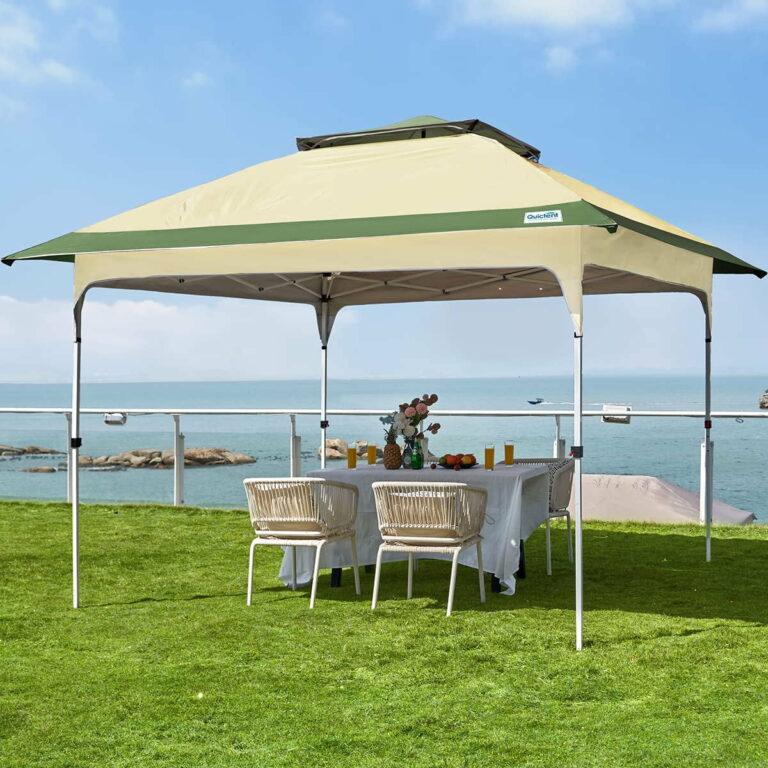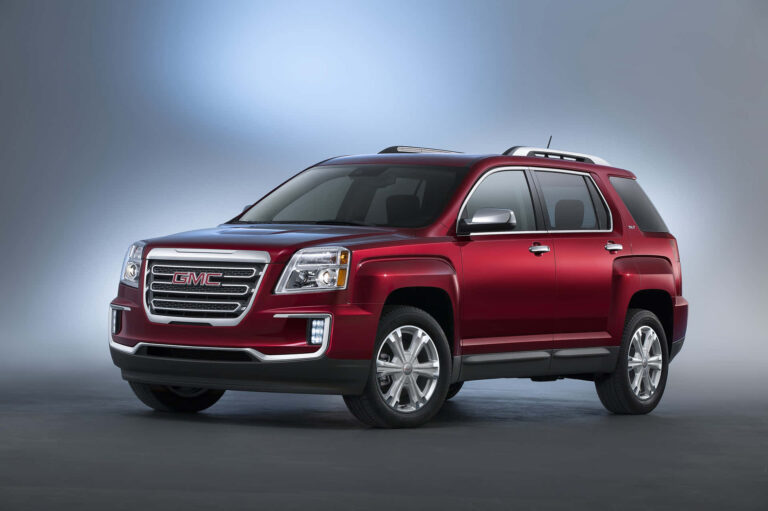U-Haul Rental Trailer: Your Comprehensive Guide to Efficient Hauling and Moving
U-Haul Rental Trailer: Your Comprehensive Guide to Efficient Hauling and Moving cars.truckstrend.com
Moving, hauling, or transporting goods doesn’t always necessitate buying a large truck or hiring professional movers. For countless individuals and businesses seeking a flexible, cost-effective, and empowering solution, the U-Haul Rental Trailer stands as an indispensable resource. More than just a piece of equipment, a U-Haul trailer represents freedom and capability, allowing you to take control of your transportation needs, whether it’s relocating a household, clearing out clutter, transporting materials for a DIY project, or even taking your vehicle on an adventure.
U-Haul, a name synonymous with do-it-yourself moving, has cultivated a reputation for accessibility and variety. Their extensive fleet of trailers is designed to cater to a spectrum of requirements, offering everything from compact utility trailers for quick errands to robust car haulers for vehicle transport. This article will delve deep into the world of U-Haul rental trailers, providing a comprehensive guide to understanding their types, benefits, rental process, and crucial considerations to ensure a smooth and successful experience.
U-Haul Rental Trailer: Your Comprehensive Guide to Efficient Hauling and Moving
The Unrivaled Convenience of U-Haul Trailers
Choosing a U-Haul trailer often presents a compelling alternative to renting a full-sized moving truck or relying on expensive delivery services. One of its primary advantages lies in its cost-effectiveness. For smaller loads, or when you already own a vehicle capable of towing, a trailer can significantly reduce expenses, primarily fuel costs, compared to operating a larger, less fuel-efficient moving truck.
Furthermore, U-Haul’s widespread network of locations across North America ensures unparalleled accessibility. Whether you’re in a bustling metropolis or a quiet rural town, there’s likely a U-Haul dealer nearby, making pickup and drop-off incredibly convenient. This extensive reach also facilitates one-way rentals, allowing you to pick up a trailer in one city and drop it off in another, a crucial feature for long-distance moves.
The flexibility offered by U-Haul trailers is another key benefit. They are not just for moving homes; their versatility extends to numerous applications. Need to pick up lumber for a home improvement project? Haul an ATV for a weekend adventure? Transport a newly purchased appliance? A U-Haul trailer can handle it all, making it a go-to solution for diverse hauling needs beyond traditional moving. This adaptability empowers individuals to manage their logistics efficiently and on their own terms.
Types of U-Haul Rental Trailers: Finding Your Perfect Match
U-Haul offers a diverse range of trailers, each designed for specific purposes. Understanding these types is the first step in selecting the right equipment for your job.

1. Cargo Trailers (Enclosed)
Cargo trailers are fully enclosed, providing maximum protection for your belongings against weather elements, dust, and debris. They also offer enhanced security, as your items are out of sight and can be locked inside.
- Description: Box-shaped trailers with a rear ramp or swing-open door for easy loading. Constructed from durable materials, they keep contents dry and secure.
- Sizes Available:

- 4×8: Ideal for small apartments, dorm rooms, or extra storage. Can hold a few pieces of furniture and boxes.
- 5×8: A popular choice for studio apartments, small offices, or hauling larger items like appliances.
- 5×10: Suitable for one-bedroom apartments or larger household moves, offering more cubic feet.
- 6×12: The largest enclosed trailer, perfect for two-bedroom apartments or moderate household moves. Can often accommodate a couch, bed, and multiple boxes.

- Ideal Uses: Moving furniture, boxes, sensitive electronics, valuables, long-distance household goods, and items requiring protection from the elements.
2. Utility Trailers (Open)
Utility trailers are open-top trailers, often equipped with a ramp, making them perfect for hauling items that are bulky, oddly shaped, or unaffected by weather.
- Description: Flatbed trailers with low sides, some featuring mesh or steel ramps for easy loading of wheeled equipment.
- Sizes Available:
- 4×7: Small and maneuverable, great for landscaping materials, small appliances, or a few pieces of furniture.
- 5×8: Versatile for home improvement projects, yard waste, or hauling ATVs.
- 5×9 with Ramp: A very popular option due to its integrated ramp, making it easy to load motorcycles, lawnmowers, or other wheeled equipment.
- 6×12: The largest utility trailer, suitable for construction materials, large equipment, or multiple ATVs/motorcycles.
- Ideal Uses: Transporting landscaping supplies (soil, mulch), construction materials (lumber, drywall), ATVs, motorcycles, riding lawnmowers, large appliances, or anything too tall or wide for an enclosed trailer.
3. Car Trailers (Auto Transports & Tow Dollies)
Designed specifically for vehicle transportation, these trailers are invaluable for moving cars, trucks, or SUVs.
- Auto Transport:
- Description: A full-platform trailer designed to carry the entire vehicle with all four wheels off the ground. Features ramps for easy loading and secure tie-downs.
- Ideal Uses: Long-distance car moves, transporting classic or high-value vehicles, or when you want to avoid adding mileage to the towed vehicle.
- Tow Dolly:
- Description: A two-wheel trailer that lifts the front two wheels of the towed vehicle off the ground, while the rear two wheels remain on the road.
- Ideal Uses: Shorter distance moves, transporting front-wheel-drive vehicles, or when budget is a primary concern. Less ideal for all-wheel-drive or rear-wheel-drive vehicles without proper preparation.
How to Rent a U-Haul Trailer: A Step-by-Step Guide
Renting a U-Haul trailer is a straightforward process, but careful planning ensures a smooth experience.
-
Assess Your Needs:
- What are you moving? List all items to estimate volume and weight.
- How far are you going? In-town vs. one-way rental.
- What type of items? Fragile, weather-sensitive, or bulky? This determines enclosed vs. open.
- What’s your budget?
-
Verify Your Tow Vehicle Requirements:
- Towing Capacity: Crucial! Your vehicle’s manufacturer specifies its maximum towing capacity. Never exceed this.
- Hitch: You’ll need a proper hitch receiver installed on your vehicle (Class I, II, III, or IV), with a ball mount and the correct size hitch ball (typically 1-7/8" or 2").
- Wiring: Your vehicle must have a working 4-way flat electrical connector for trailer lights (tail lights, brake lights, turn signals). U-Haul can install hitches and wiring if needed, but it’s best to arrange this in advance.
-
Make a Reservation:
- Online: The easiest way. Visit U-Haul’s website, enter your dates, locations, and desired trailer type.
- Phone: Call U-Haul directly or a local dealer.
- In-Person: Visit a U-Haul center.
- Tip: Book well in advance, especially during peak moving seasons (end of month, summer, holidays) to ensure availability.
-
Pickup and Hook-Up:
- Identification: Bring your valid driver’s license and payment method.
- Inspection: Before leaving, inspect the trailer for any existing damage, and ensure all lights are working.
- Hook-Up: U-Haul staff will typically assist with attaching the trailer to your vehicle, connecting the safety chains, and verifying the electrical connection. Pay attention and ask questions if you’re unsure about any step.
- Paperwork: Review and sign the rental agreement, understanding the terms, conditions, and insurance options.
-
Driving with a Trailer:
- Load Distribution: Load heavier items over the trailer’s axle, distributing weight evenly from side to side. About 60% of the weight should be in the front half of the trailer to ensure proper tongue weight (10-15% of the total trailer weight). Improper loading is a leading cause of trailer sway and accidents.
- Slower Speeds: Drive slower than usual, especially on curves and descents.
- Increased Braking Distance: Your stopping distance will be significantly longer. Allow ample space between your vehicle and others.
- Wider Turns: Account for the trailer’s path. Swing wider on turns to avoid hitting curbs or other obstacles.
- Mirrors: Constantly use your side mirrors to monitor the trailer.
- Backing Up: This takes practice. Make small steering adjustments and use your mirrors. It’s often easier to have a spotter.
-
Return:
- Timely Return: Return the trailer to the agreed-upon location by the specified time to avoid late fees.
- Inspection: The U-Haul representative will inspect the trailer for damage upon return.
Essential Considerations Before You Tow
Successful trailer towing hinges on preparation and adherence to safety guidelines.
- Towing Vehicle Compatibility: Always consult your vehicle’s owner’s manual for its exact towing capacity, Gross Vehicle Weight Rating (GVWR), and Gross Combined Weight Rating (GCWR). Never exceed these limits. Remember, towing capacity includes the weight of the trailer itself plus its contents.
- Hitch and Wiring: Ensure your hitch is correctly installed and rated for the weight you plan to tow. The hitch ball must be the correct size for the trailer coupler. All trailer lights (tail, brake, turn signals) must be fully functional. U-Haul offers hitch installation services if your vehicle isn’t equipped.
- Safety Checks: Before every trip, perform a quick safety check:
- Is the coupler securely latched onto the hitch ball?
- Are the safety chains crossed under the tongue and attached to the tow vehicle?
- Is the electrical connection secure and are all lights working?
- Are the trailer tires properly inflated and in good condition?
- Are all items inside the trailer secured to prevent shifting?
- Insurance: Your personal auto insurance policy might cover damage to the U-Haul trailer or liability incurred while towing. However, it’s crucial to confirm this with your insurer. U-Haul also offers optional coverage plans like Safemove (for cargo/utility trailers) and Safetow (for car trailers) which provide protection against damage to the trailer and some liability coverage. It’s highly recommended to consider these for peace of mind.
- Load Distribution: This cannot be stressed enough. Incorrect load distribution is the primary cause of trailer sway and loss of control. Aim for 60% of the cargo weight to be in the front half of the trailer, directly over or slightly ahead of the axle.
- Driving Habits: Maintain a slower speed, especially on highways and during adverse weather conditions. Leave significantly more space for braking. Be mindful of crosswinds, which can severely affect trailer stability.
Benefits of Choosing U-Haul Trailers
Beyond the obvious, U-Haul trailers offer several distinct advantages:
- Cost-Effectiveness: Often more affordable than renting a full moving truck, especially if you already have a capable tow vehicle.
- Flexibility: Options for both in-town and one-way rentals, catering to local moves or cross-country journeys.
- Variety of Sizes and Types: A wide selection ensures you can find the perfect trailer for virtually any hauling task.
- Extensive Network: With thousands of locations, picking up and dropping off is incredibly convenient.
- DIY Control: You maintain full control over your schedule, packing, loading, and transportation.
- Reduced Fuel Costs: For lighter loads, towing with your existing fuel-efficient vehicle can be more economical than renting a large, gas-guzzling truck.
Common Challenges and Solutions
While U-Haul trailers offer convenience, potential challenges can arise. Being aware of them allows for proactive solutions.
- Overloading: Exceeding the trailer’s weight capacity or your vehicle’s towing capacity is dangerous. Solution: Carefully estimate the weight of your items. If in doubt, opt for a larger trailer or make multiple trips. Never guess.
- Improper Hitching: A loose or incorrectly hitched trailer can detach. Solution: Always double-check the coupler, ensure it’s fully latched and locked. Connect safety chains correctly, crossing them under the tongue.
- Driving Difficulties (Sway, Braking): Unexpected trailer sway or extended braking distances can be alarming. Solution: Ensure proper load distribution. Drive slower, especially downhill or in windy conditions. Practice driving with the trailer in a safe, open area before your main trip.
- Breakdowns: While rare, mechanical issues can occur. Solution: U-Haul offers 24/7 roadside assistance. Keep their number handy.
- Availability Issues: During peak seasons, desired trailer sizes might be scarce. Solution: Book your trailer as far in advance as possible. Be flexible with your pickup/drop-off times or locations if possible.
U-Haul Rental Trailer Price Guide (Estimated)
Please note that these prices are estimates only and can vary significantly based on:
- Location: Prices differ by city, state, and region.
- Demand: Peak season (summer, end of month) will see higher prices.
- Duration: Daily vs. weekly rates, and additional days.
- Distance: One-way rentals are priced based on the mileage/route.
- Availability: Last-minute rentals might be more expensive or unavailable.
Always obtain a direct quote from U-Haul for accurate pricing.
| Trailer Type | Size (Approx.) | Estimated Daily Rate (In-Town) | Estimated One-Way Rate (Range)* | Typical Usage |
|---|---|---|---|---|
| Cargo Trailers | ||||
| 4×8 Enclosed | 200 cu. ft. | $14.95 – $24.95 | $150 – $400+ | Small apts, dorms, extra storage |
| 5×8 Enclosed | 256 cu. ft. | $18.95 – $29.95 | $175 – $500+ | Studio apts, appliances, small office |
| 5×10 Enclosed | 380 cu. ft. | $24.95 – $34.95 | $200 – $600+ | 1-bedroom apts, larger furniture |
| 6×12 Enclosed | 480 cu. ft. | $29.95 – $39.95 | $250 – $800+ | 2-bedroom apts, moderate household moves |
| Utility Trailers | ||||
| 4×7 Utility | Open | $14.95 – $22.95 | $100 – $300+ | Landscaping, small items, yard waste |
| 5×8 Utility | Open | $18.95 – $27.95 | $120 – $350+ | Home projects, ATVs, large items |
| 5×9 Utility (w/ Ramp) | Open | $24.95 – $32.95 | $150 – $400+ | Motorcycles, lawnmowers, wheeled equipment |
| 6×12 Utility | Open | $29.95 – $37.95 | $175 – $500+ | Construction materials, multiple ATVs, large equipment |
| Car Trailers | ||||
| Tow Dolly | 2 wheels up | $39.95 – $59.95 | $200 – $700+ | Front-wheel drive vehicles, shorter distances |
| Auto Transport | 4 wheels up | $49.95 – $69.95 | $300 – $1000+ | All vehicle types, long-distance moves, classic cars |
*One-way rates are highly variable and depend on the specific origin, destination, and distance.
Optional insurance (Safemove/Safetow) and other accessories (boxes, hitches) are additional costs.
Frequently Asked Questions (FAQ)
Q: Do I need a special license to tow a U-Haul trailer?
A: In most U.S. states and Canadian provinces, you do not need a special driver’s license to tow a U-Haul trailer, as long as the Gross Combined Weight Rating (GCWR) of your vehicle and the trailer combined does not exceed standard limits (usually around 26,000 lbs, but check local regulations). A standard Class D (or equivalent) driver’s license is typically sufficient.
Q: What kind of hitch do I need for a U-Haul trailer?
A: You’ll need a properly installed hitch receiver on your vehicle, a compatible hitch ball (usually 1-7/8" or 2" for most U-Haul trailers), and a working 4-way flat electrical connector for the trailer lights. U-Haul offers hitch installation services.
Q: Can I rent a trailer one-way?
A: Yes, U-Haul offers one-way rentals for most of its trailers, allowing you to pick up in one location and drop off in another. This is ideal for long-distance moves.
Q: What if my car isn’t big enough to tow a trailer?
A: If your vehicle doesn’t have the necessary towing capacity or equipment, you’ll need to consider other options, such as renting a U-Haul moving truck, hiring professional movers, or asking a friend with a suitable vehicle to assist.
Q: Is insurance required for U-Haul trailers?
A: While not legally required by U-Haul, it is highly recommended. Your personal auto insurance policy might offer some coverage, but it’s best to verify. U-Haul offers optional coverage plans (Safemove for cargo/utility trailers and Safetow for car trailers) that provide additional protection.
Q: How do I know what size trailer I need?
A: Estimate the volume and weight of your belongings. U-Haul’s website offers helpful sizing guides based on the number of rooms or types of items you’re moving. When in doubt, it’s generally better to go slightly larger than too small.
Q: Can I pick up/drop off at any U-Haul location?
A: For in-town rentals, you typically pick up and drop off at the same location. For one-way rentals, you specify your origin and destination, and U-Haul will confirm the available drop-off locations.
Q: What should I do if I have a problem on the road with the trailer?
A: U-Haul provides 24/7 roadside assistance for their rental equipment. Their contact number is usually provided on the rental agreement and on the trailer itself. Pull over safely and call for assistance.
Conclusion
The U-Haul rental trailer is an incredibly versatile and powerful tool for anyone looking to transport goods efficiently and affordably. From small personal errands to significant household moves, U-Haul’s diverse fleet of cargo, utility, and car trailers offers tailored solutions for nearly every need. By understanding the different types of trailers, following the straightforward rental process, and adhering to essential safety considerations, you can confidently take control of your hauling projects.
U-Haul empowers the do-it-yourselfer, providing not just equipment, but the freedom and flexibility to move what you need, when you need it, on your own terms. With careful planning and attention to detail, a U-Haul rental trailer can transform what might seem like a daunting task into a manageable and successful endeavor, proving once again that with the right tools, you can achieve remarkable things.





